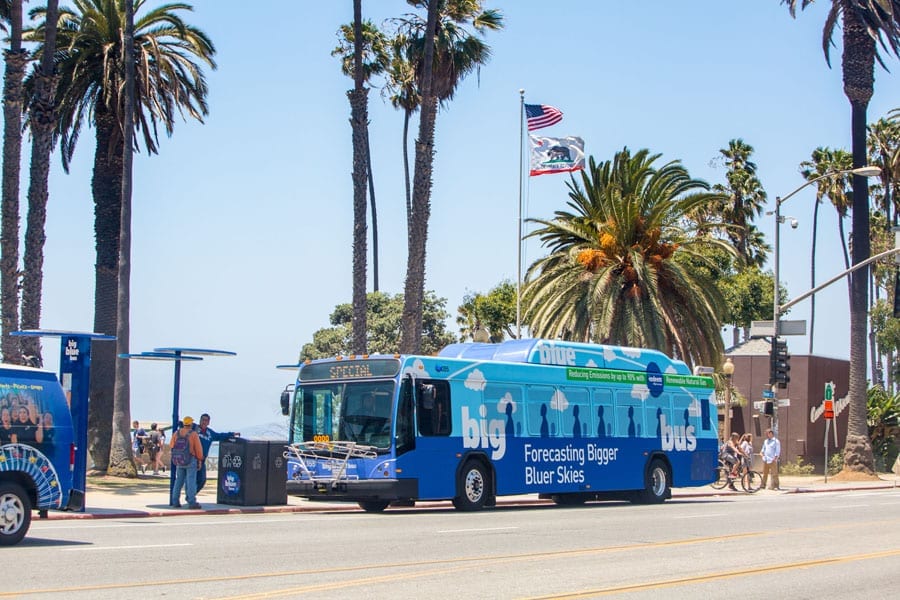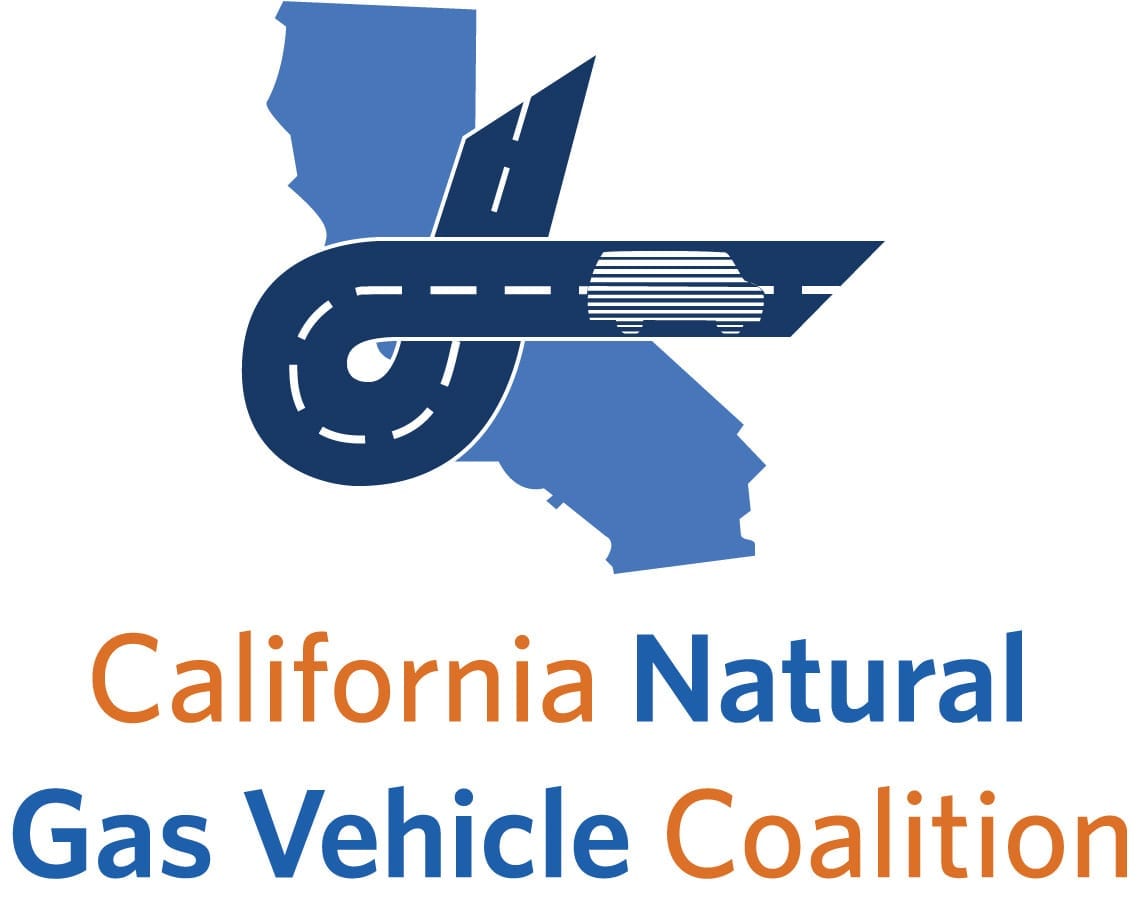California policy makers—at the local and state level—are increasingly under pressure to make electric vehicles the only clean transportation option for every use. That would be a mistake: it would close the door to other alternatives that meet or exceed EVs’ emissions benefits and leave some types of fleets with dirty diesel as their only cost-effective option for near-term purchases.
RNG has four big benefits: It’s a climate twofer, reducing greenhouse gas emissions through both production and use. It reduces toxic air pollution. Its local production creates good jobs. It can do all this now, through use in readily available near-zero natural gas engines.
In California, upwards of 95 percent of trucks run on diesel. These and other heavy-duty vehicles produce a disproportionate share of emissions—20 percent of transportation-related greenhouse gases in the U.S., about 50 percent of smog-forming emissions, and more than two-thirds of toxic diesel particulate pollution. The need to address this situation is urgent: people who live around ports and major trucking routes are literally dying from air pollution, and greenhouse gas emissions were an emergency yesterday.
Many policy makers seem fixated on a solution that’s not available yet: market-ready electric trucks and buses that can meet the demands of all heavy-duty operations. We already have a fuel that can do the job and offers distinct advantages. It’s renewable natural gas, also known as RNG or biomethane.
RNG has four big benefits: It’s a climate twofer, reducing greenhouse gas emissions through both its production and use. It reduces toxic air pollution. Its local production creates good jobs. And it can do all this now, through use in readily available near-zero natural gas engines.
RNG, the climate twofer
RNG is the lowest-carbon fuel available on a full fuel-cycle basis (production to end use), according to California Air Resources Board analyses for the state’s Low Carbon Fuel Standard, updated in 2015. It’s produced by capturing methane—a potent short-lived climate pollutant—that would otherwise flow into the air from landfills, wastewater treatment plants, food waste, and dairies and other large agricultural operations. The process is a compelling realization of circular economy principles: byproducts and waste that cause pollution become a valuable new product.
Carbon intensity scores are the lowest when RNG is used in trucks with near-zero natural gas engines.
When made from food waste, RNG powering a heavy-duty truck has a carbon intensity of negative 25.5. RNG from other sources has carbon intensity scores ranging from 8.6 to 26.2 when used in heavy trucks. (That compares with 38.9 for a battery electric truck running off California’s average electrical grid mix.) Those scores are even lower when RNG is used in trucks with near-zero natural gas engines, which have a closed-crankcase ventilation system that reduces tailpipe methane emissions as much as 70 percent.
Cleaner, safer air with RNG
The near-zero engines also produce almost no nitrogen oxides (NOx), a primary component of smog, or black carbon. CARB has certified Cummins Westport’s ISX12N and L9N natural gas engines at 0.01 grams NOx per brake horsepower-hour while running on RNG—half the emissions required in its optional low-NOx standard of 0.02 g/bhp-hr, and more than 90 percent lower than the current federal standard.
Putting RNG-fueled near-zero heavy-duty trucks to use at scale would immediately benefit the low-income, predominantly minority communities that are suffering the most from exposure to diesel exhaust.
Putting RNG-fueled near-zero heavy-duty trucks to use at scale would immediately benefit the low-income, predominantly minority communities that are suffering the most from exposure to diesel exhaust. The health effects these communities face are severe: premature death; hospitalizations and emergency department visits for aggravated chronic heart and lung conditions, including asthma; increased respiratory symptoms; and decreased lung function in children.
New jobs and other economic benefits
Deploying trucks powered by RNG could also create as many as 130,000 good-paying jobs in California (in RNG production, truck and fueling infrastructure, and related fields) and add $14 billion to the state’s economy by 2030, according to an according to an analysis by the transportation consulting firm ICF. Just at the two San Pedro Bay ports in Southern California, replacing diesel vehicles with 17,000 low-NOx trucks running on RNG would add more than 23,000 jobs and generate $2 billion in economic benefit, ICF found.
Deploying trucks powered by RNG could also create as many as 130,000 good-paying jobs in California and add $14 billion to the state’s economy by 2030.
The University of California, Davis, Institute of Transportation Studies forecasts that California could produce 750 million gallon equivalents of RNG annually. Already, CR&R Environmental Services has opened one of the world’s largest anaerobic digesters in Perris, a town in Riverside County where it employs 1,500 people. The facility turns food waste, landscaping, and other green waste into RNG without emitting any pollutants. When fully built out, the digester will convert 335,000 tons of waste annually into 4 million gallons of RNG and 260,000 tons of soil amendment. In Sacramento, ReFuel Energy’s natural gas station is partnering with a Sacramento biodigester facility that can turn a load of food waste into transportation-grade RNG in just 21 days. The facility is designed to accept 100 tons of food waste every day and could replace more than 600,000 gallons of diesel with RNG every year.
Fleets are waking up to the RNG opportunity.
Nationally, members of the Coalition for Renewable Natural Gas are on track to produce more than 622 million gallon equivalents of RNG in 2018, including more than 541 million for transportation. That’s enough RNG to replace more than 15 percent of diesel consumption in California.
Fleets are waking up to the RNG opportunity. The Los Angeles County Metropolitan Transportation Authority (LA Metro), for example, is upgrading its natural gas bus fleet to near-zero buses and transitioning to RNG. The agency commissioned an analysis from M.J. Bradley & Associates and Ramboll Environ that found over the next 40 years, “the use of RNG and transition to [low-]NOx buses will be more effective at reducing PM, total CO2, total GHGs, and total NOx from the LACMTA fleet than transition to either electric or fuel cell buses” at by far the lowest cost. That’s in large part because LA Metro can put hundreds of RNG-powered buses on the road right now.
What’s holding us back?
Despite all these benefits, RNG’s potential, especially when used in superclean engines, is largely unsung outside a vanguard of regulatory analysts and early-adopter fleet operators like transit agencies, UPS, and Waste Management. One factor is that RNG requires specialized fuel dispensers—but so does electricity, and fleets already using natural gas vehicles can switch seamlessly to RNG. Another is that commercial transportation is simply not top of mind for most people. Maybe the RNG-NGV sector needs its own Elon Musk. A significant reason, though, is that some are pushing to end public support for any clean transportation solution other than battery electric vehicles, regardless of other solutions’ advantages or the lack of commercially available battery electric options for many heavy-duty uses.
RNG’s potential, especially when used in superclean engines, is largely unsung. Maybe the RNG-NGV sector needs its own Elon Musk.
I honestly don’t know what is behind this idea, but it exacts a heavy price: while waiting for an all-electric future, Californians will suffer many more years of unnecessary emissions—diesel vehicles purchased now will be in service for a decade or more. Is it fair to condemn a whole generation of people who live near goods movement centers and highways to poor health? That approach goes directly against the state’s commitment to diversity and inclusion as well as to cleaner air and climate action. We need to ensure that we’re using all the tools in the box to reach the lofty goals we’ve set for ourselves.
This is not an argument against electric vehicles—it’s an argument for using every currently available, superclean technology to address our air quality and climate problems now. Transportation accounts for 39 percent of California’s greenhouse gas emissions. We can do better, and we don’t have to wait. Paths to lower emissions from the high-fuel-use heavy-duty sector are open right now.



